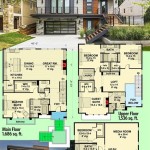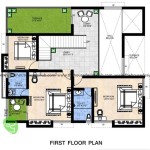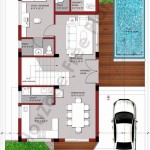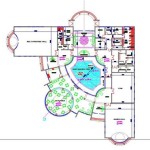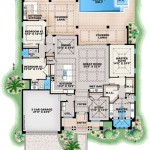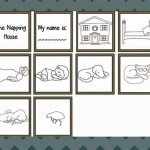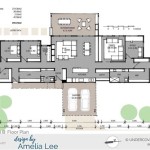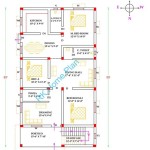Circular House Plans: An Exploration of Unconventional Design
Circular house plans offer a unique departure from traditional rectangular designs, presenting both advantages and challenges for homeowners. This unconventional approach to residential architecture results in distinctive living spaces that often prioritize energy efficiency, natural light, and connection with the surrounding environment. Understanding the key characteristics, benefits, and considerations associated with circular house plans is crucial for anyone considering this architectural style.
One of the primary advantages of a circular design is its inherent aerodynamic properties. The curved walls deflect wind more effectively than flat surfaces, reducing wind resistance and minimizing drafts. This natural wind resistance can contribute to lower heating and cooling costs, particularly in areas prone to strong winds. Furthermore, the circular shape allows for consistent sunlight exposure throughout the day, maximizing natural light penetration and potentially reducing reliance on artificial lighting.
The central core of a circular house often serves as a functional hub, housing utilities, plumbing, and mechanical systems. This centralized arrangement simplifies maintenance and access to these essential components. Additionally, the open floor plan characteristic of many circular designs promotes a sense of spaciousness and flow, fostering interaction and connection within the living areas.
Building with a circular design can also facilitate a stronger connection with the outdoors. The curved walls create natural opportunities for panoramic windows and strategically placed doorways, blurring the lines between indoor and outdoor spaces. This integration with the surrounding landscape can enhance the overall living experience, promoting a sense of tranquility and connection with nature.
However, circular house plans also present specific challenges that require careful consideration. Furnishing a circular space can be more complex than furnishing a rectangular room, requiring custom-made furniture or creative placement of standard pieces to optimize space utilization. Curved walls can also make it challenging to incorporate standard shelving and storage solutions.
Construction costs for circular homes can be higher compared to traditional rectangular homes due to the specialized materials and techniques required. Curved walls necessitate flexible building materials or intricate framing methods, potentially increasing labor and material expenses. Finding contractors experienced with circular construction can also be a challenge, adding another layer of complexity to the building process.
The design process for a circular house requires a different approach compared to traditional rectangular homes. Architects specializing in this unique style understand the complexities of designing for curved spaces and can help homeowners navigate the challenges of maximizing functionality while maintaining aesthetic appeal. Careful planning and collaboration with experienced professionals are crucial for a successful circular house project.
Despite the challenges, the inherent advantages of circular house plans continue to attract homeowners seeking unique and sustainable living solutions. The aerodynamic properties, potential for energy efficiency, and enhanced connection with nature make circular homes an appealing alternative to conventional rectangular designs. By understanding both the benefits and challenges, prospective homeowners can make informed decisions about whether a circular house plan aligns with their needs and lifestyle.
Several variations and adaptations of circular house plans exist, offering flexibility in design and functionality. Some designs incorporate partial circular elements, combining curved walls with traditional rectangular sections to create hybrid spaces. Others feature multiple interconnected circular structures, creating a cluster of individual units that share a central courtyard or garden. These variations allow homeowners to customize their living spaces to meet specific needs and preferences while still benefiting from some of the advantages of circular design.
The use of sustainable materials and building practices further enhances the eco-friendly potential of circular house plans. Incorporating materials with low environmental impact, such as recycled wood, bamboo, or straw bales, can reduce the overall carbon footprint of the construction process. Utilizing passive solar design principles and incorporating renewable energy systems, such as solar panels or wind turbines, can further contribute to the energy efficiency and sustainability of the home.
Privacy considerations are also important in circular house plans. While the curved walls offer unique opportunities for expansive windows and views, careful placement of openings and landscaping is essential to maintain privacy from neighbors and passersby. Strategic use of landscaping elements, such as trees, shrubs, and berms, can create natural barriers and enhance the privacy of the outdoor spaces.
Ultimately, the decision to build a circular house is a personal one, driven by individual preferences and priorities. By carefully weighing the advantages and disadvantages, and by collaborating with experienced architects and builders, homeowners can create unique and functional living spaces that embrace the distinctive qualities of circular design.

Roundhouse In 2024 Round House Home Design Plans Floor

Two Bedroom Roundhouse

How To Properly Design Circular Plans Archdaily

Custom Floor Plans Modern Prefab Homes Round House

Circular House Floor Plan

Circle Shape House Floor Plan Round Plans Small Design

1 5 Story Roundhouse

University Building By Bdg Architects With A Circular Plan

10 Houses With Weird Wonderful And Unusual Floor Plans

Circular Houses With Unique And Unprecedented Designs

